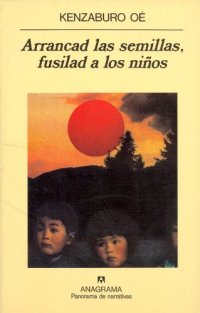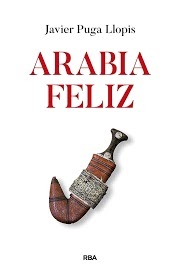
Review of the book “Tear out the seeds, shoot the children” by Kenzaburo Oé.
“Tear out the seeds, shoot the children” is a novel by the Japanese writer Kenzaburo Oé, published in 1958. This work is a social and political critique, which portrays the struggle of a group of peasants against oppression and injustice in a small Japan village.
“Tear out the seeds, shoot the children”, by Kenzaburo Oé, one of the most important Japanese writers of the 20th century and winner of the Nobel Prize for Literature in 1994. This is his first novel, published in 1958, when he was only 23. years. The work is a raw and heartbreaking story about war, marginalization and the survival of a group of delinquent teenagers who are abandoned in a town isolated by an epidemic.
The book is based on a real experience that the author lived when he was a child, during World War II. Oé was evacuated along with other children from his school to a rural village, where he suffered rejection and mistreatment from the local inhabitants. There he met a Korean boy who was even more discriminated against than him and who became his friend. This experience deeply marked the writer and inspired him to create his first literary work.
The novel is narrated in the first person by the leader of the group of fifteen boys who are sent from a reform school to a mountain town called Shisui. The local inhabitants consider them parasites and force them to work in the hard work of the fields. When an epidemic of bubonic plague breaks out, the villagers flee and are locked inside the empty village, without food or medicine. The boys have to face hunger, illness, cold and loneliness, while trying to maintain a certain dignity and solidarity among themselves. Among the characters, I stands out, a Korean boy who is adopted by the group and who represents innocence and hope in the face of cruelty and despair.
The title of the book refers to the words spoken by the mayor of the town before abandoning the children to their fate: “Tear out the seeds, shoot the children.” With this phrase, the mayor expresses his desire to eliminate the rebellious young people who he considers a threat to the social and moral order. The author uses this metaphor to denounce the violence and oppression suffered by the weakest and most marginalized by the powerful and conformists. Thus, the book is a criticism of post-war Japanese society, which was indifferent to the suffering of the poorest and most vulnerable.
The novel has a direct and simple style, but also poetic and symbolic. The author uses images and symbols to express the emotions and feelings of the characters, as well as to create an oppressive and distressing atmosphere. Some examples are fire, which represents life and death; the river, which symbolizes destiny and change; or the forest, which alludes to mystery and danger. The language also reflects the contrast between the harshness of reality and the beauty of nature.
“Tear out the seeds, shoot the children” is a shocking and moving novel, which shows us the human capacity to resist and to create emotional bonds in the midst of the worst circumstances. It is also a masterpiece of contemporary Japanese literature, which brings us closer to the critical and committed vision of Kenzaburo Oé.
The story begins with the arrival of a group of university students to the village. These young people, motivated by revolutionary theories, seek to convince the peasants to join their cause and fight against the feudal system. However, the peasants, who have been oppressed for centuries, are skeptical and distrustful of the students.
The situation changes when the leader of the peasants, a man named Takichiro, discovers that his eldest son has been kidnapped by a group of government soldiers. Desperate, Takichiro begins to search for his son, facing the brutality of the military forces and local authorities. In this context of oppression and violence, peasants begin to organize to fight against injustice and oppression.
The novel addresses themes such as oppression, class struggle, political violence and resistance. Oé uses raw and direct language to show the brutality of violence and repression, and also uses poetry and imagination to portray the fight for freedom and justice. The narrative is complex and multidimensional, with multiple characters and points of view offering different perspectives on the peasants’ struggle.
One of the highlights of the novel is the way Oé portrays the characters. The farmers are portrayed as real people, with their fears, their hopes and their dreams. Through his struggle, Oé shows how peasants can find their own voice and fight against oppression and injustice.
In short, “Tear up the seeds, shoot the children” is a powerful and raw novel that shows the struggle of peasants against oppression and injustice. Oé uses direct and poetic language to portray the brutality of violence and repression, and also shows how struggle can inspire hope and resistance. This novel is a reminder of the importance of freedom and justice in a world where oppression and injustice still exist.
Source: https://algunoslibrosbuenos.com/arrancad-las-semillas-fusilad-a-los-ninos


